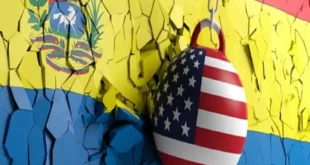Another round of mobilization in Russia is likely this year. The prospect of a second round of the draft has hung over Russian society since the first one in September 2022, and both Ukraine and Western officials cited in the press in the past couple of months have publicly said Russia is moving towards such a decision.
Behind this decision is a dilemma that reaches to the very heart of Russia’s invasion plan. This is continued tension between Russia’s military capabilities, President Putin’s ambitious strategic objectives for the war, and the Kremlin’s unwillingness to scale down these objectives. This leaves it with little option but to pursue any measure that can potentially help Russia’s military succeed. While mobilization is no silver bullet to all of Russia’s military failings, it would nonetheless provide Moscow with another boost in troop numbers, make it more difficult for Ukraine to advance, and set the scene for a protracted, attritional war.
In September, Russia claimed it recruited 300,000 new troops as part of a ‘partial’ mobilization. However, the mobilization process appeared chaotic in practice and the number of recruits much less clear. Some students faced the draft, despite explicit pledges to the contrary. There were also protests across cities in Russia, though the police and authorities quickly quashed most of them.
The main reason that another round of mobilization is likely is that Russia still seems to hold ambitious strategic goals in Ukraine. At the very least, this appears to be the mass occupation of Ukraine’s territory. At most, the Kremlin probably still harbors aspirations of forcing regime change in Kyiv, though the means by which they could do that now are unclear.
Irrespective of what the goals are, Putin is highly unlikely to be content with the current military and territorial status quo in Ukraine. Russia does not even control the entirety of the territories it claims to have annexed, and faces a Ukrainian government that shows little interest in compromise with the Kremlin and for which Western support shows few signs of waning. Russia’s constant reshuffling of generals is probably further evidence of Putin’s discontent with the current situation, and of wider infighting within the higher echelons of the Kremlin and military.
Russia’s ability to achieve its goals is weakening and is likely to continue to do so. Overall attrition rates have been high since the conflict started. Heavy losses among better-trained units in the airborne divisions (VDV) and Wagner have also forced an increasing reliance on less well-trained personnel. These include those mobilized in September, conscripted men from the occupied territories and even prisoners from jails in Russia.
While these forces appear capable of holding their defensive lines, there is little sign they will significantly boost Russia’s overall offensive capabilities, compensate for heavy losses among better-trained units, or prove strategically decisive.
Launching an offensive of the scale that Russia would need to succeed in Ukraine requires extremely skilled, well-trained troops and an ability to conduct complex combined arms maneuvers. It has not been able to demonstrate that kind of ability since the early period of the war. Nor is it something that can be easily taught to mobilized personnel within three to six months.
There is so far little sign that Russia is using such an approach in its latest Donbas offensive, nor that it will or can do so in the next few months. In its push in Donbas in the past month and notably on Bakhmut, Russia has often used ‘human wave’ tactics – frontal assaults on Ukrainian positions with little to no protection or air support. This appears to be coming at heavy costs; NATO officials cited in the press earlier in February said Russia was losing as many as 2,000 men for every 100 yards gained as part of these attacks. The high rate seems consistent with open-source reporting on Russia’s wider attrition rates.
In this increasingly attritional conflict, Russia faces a three-way dilemma: to tolerate further heavy losses, scale down the war’s ambitious aims, or embark on another round of the draft. There is little sign that Russia will choose the second option. A continued depletion of its invasion force would only make it easier for Ukraine to retake land this year and over the longer term. That leaves it with the third option, which is another round of mobilization.
Another round of mobilization is not a silver bullet to all of Russia’s difficulties in Ukraine and poses issues within Russia too. Withdrawing more males from the workforce is likely to damage the economy and mobilization also brings the war home to Russian society in a way that the government spent the first several months of the war trying to avoid. Protests across major cities would be likely in the event of another round of mobilization, though these would once again be relatively small and easy to suppress.
But the regime probably views it as the least bad option. How, if and to what extent another few hundred thousand troops can offset all the other weaknesses within Russia’s military is ultimately unclear. Yet it would at least give Russia a potential numerical advantage over Ukraine and offer some additional offensive potential, depending on how many additional troops Russia can draw upon.
At the very least, Russia has already shown increased force density can make it more difficult for Kyiv to advance quickly, helping to draw out a war in which Putin seemingly feels he can outlast the West and Ukraine.
 Eurasia Press & News
Eurasia Press & News


